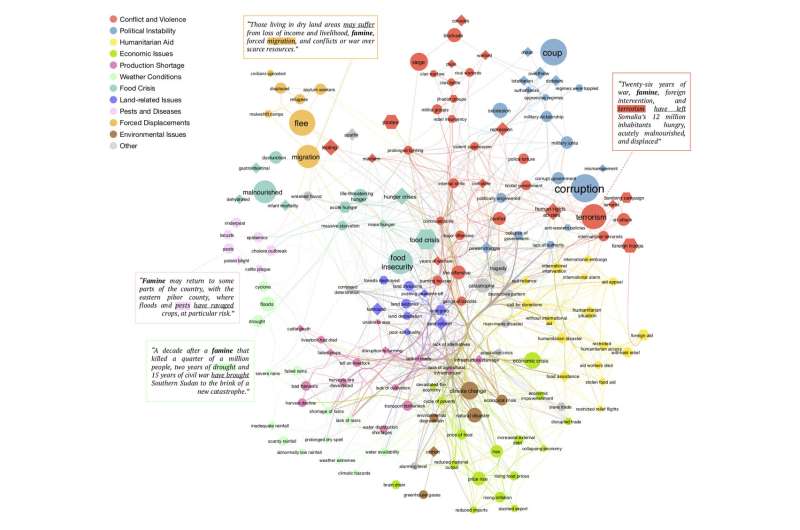

A team of researchers has developed a machine learning model that draws from the contents of news articles to effectively predict locations that face risks of food insecurity. The model, which could be used to help prioritize the allocation of emergency food assistance across vulnerable regions, marks an improvement over existing measurements.
“Our approach could drastically improve the prediction of food crisis outbreaks up to 12 months ahead of time using both real-time news streams and a predictive model that is simple to interpret,” says Samuel Fraiberger, a visiting researcher at New York University’s Courant Institute of Mathematical Sciences, a data scientist at the World Bank, and an author of the study, which appears in the journal Science Advances.
“Traditional measurements of food insecurity risk factors, such as conflict severity indices or changes in food prices, are often incomplete, delayed, or outdated,” adds Lakshminarayanan Subramanian, a professor at the Courant Institute and one of the paper’s authors. “Our approach takes advantage of the fact that risk factors triggering a food crisis are mentioned in the news prior to being observable with traditional measurements.”
Food insecurity threatens the lives of hundreds of millions of people around the world. According to the Food and Agriculture Organization of the United Nations, the number of undernourished increased from 624 million people in 2014 to 688 million in 2019. Conditions, the paper’s authors note, have deteriorated since then due to the COVID-19 pandemic, climate change, and armed conflicts—in 2021, between 702 and 828 million people worldwide faced hunger. Moreover, severe food insecurity increased both globally and in every region in 2021.
Despite the acute and widespread nature of this affliction, current methods to detect future food crises rely on risk measures that are insufficient, hindering efforts to address them.
In working to develop a better model, the paper’s authors, who also included Ananth Balashankar, a Courant doctoral graduate, considered the possibility that news coverage, which offers real-time, on-the-ground accounts of local developments, could serve as an early-warning system for impending food crises.
The researchers collected text from more than 11 million news articles focused on nearly 40 food-insecure countries that were published between 1980 and 2020. They then developed a method to extract particular phrases in these articles related to food insecurity and in ways that capture journalistic assessment in notable detail. Specifically, the tool accounts for nearly 170 text features in order to correctly gauge the semantics of the phrases pertaining to food insecurity and to mark when the articles appear. The following is an example from South Sudan, which outlines both location and risk factors: “Famine may return to some parts of the country, with eastern Pibor county, where floods and pests have ravaged crops, at particular risk.”
They then considered data on a range of food-insecurity risk factors—such as conflict fatality counts, rainfall, vegetation, and changes in food prices—to determine if there was correlation between news mentions of these factors and their occurrence in the studied countries and regions. Here, they found a high correlation between the nature of the coverage and the on-the-ground occurrences of these factors, indicating that news stories are an accurate indicator of the studied conditions.
But to determine if news articles were, in fact, a good predictor of subsequent food crises, the team needed to know if the nature of the coverage was a viable indicator of future crises and if these stories did so more accurately than traditional measurements. Using a smaller set of news stories, the researchers found that from 2009 to 2020 and across 21 food-insecure countries, news coverage yielded more accurate predictions at the local level of food insecurity—and did so up to 12 months ahead of time—than traditional measurements that did not include news story text. Notably, they also found that supplementing traditional predictive measures with news coverage further improved the accuracy of food-crisis predictions, suggesting the value of “hybrid” models.
The researchers also see potential larger uses for their work.
“News indicators could be extended to the prediction of disease outbreaks and the future impact of climate change,” observes Balashankar.
More information:
Ananth Balashankar et al, Predicting food crises using news streams, Science Advances (2023). DOI: 10.1126/sciadv.abm3449. www.science.org/doi/10.1126/sciadv.abm3449
Journal information:
Science Advances
Source: Read Full Article